Unidirectional Fiber Cut on Line
When there is a line unidirectional fiber cut on a NCS 1020 network, alarms are raised and suppressed at the respective ports of each node.
The following figure displays line unidirectional fiber cut on a NCS 1020:
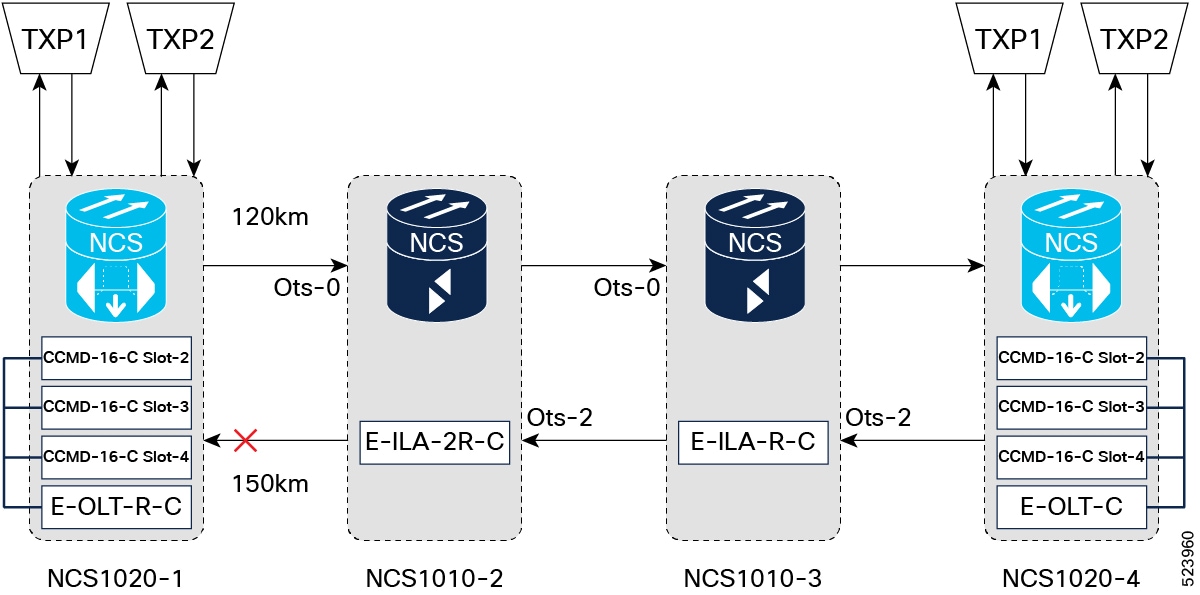
The following table lists the alarms that are raised and suppressed at the respective ports of each node:
|
NODE |
Active Alarms |
Ports where alarms are raised |
Suppressed Alarms |
Ports where alarms are suppressed |
|---|---|---|---|---|
|
NCS 1020 - 1 |
|
Line OTS 0/0/0/0 |
Rx-LOS-P |
|
|
TX-POWER-FAIL-LOW |
OTS-OCH 0/0/0/com-port/channel |
TX-POWER-FAIL-LOW |
OTS-OCH 0/0/0/0/channel |
|
|
NCS1020 – 2 (ots - 0) |
|
Line OTS 0/0/0/0 |
Rx-LOS-P |
OTS-OCH 0/0/0/0/x x is channel id |
|
TX-POWER-FAIL-LOW |
OTS-OCH 0/0/0/0/channel |
|||
|
NCS1020 – 2 (ots - 2) |
|
Line OTS 0/0/0/2 |
TX-POWER-FAIL-LOW |
OTS-OCH 0/0/0/2/channel |
|
NCS1020 – 3 (ots - 0) |
Rx-LOS-P |
Line OTS 0/0/0/0 |
Rx-LOS-P |
OTS-OCH 0/0/0/0/x x is channel id |
|
NCS1020– 3 (ots - 2) |
|
Line OTS 0/0/0/2 |
TX-POWER-FAIL-LOW |
OTS-OCH 0/0/0/0/2 |
|
NCS1020 – 4 |
|
Line OTS 0/0/0/0 |
Rx-LOS-P |
OTS-OCH 0/0/0/0/x x is channel id |
|
TX-POWER-FAIL-LOW |
OTS-OCH 0/0/0/com-port/channel |
|||
|
NCS1020 |
Rx-LOS-P |
OMS 0/0/slot/0 |

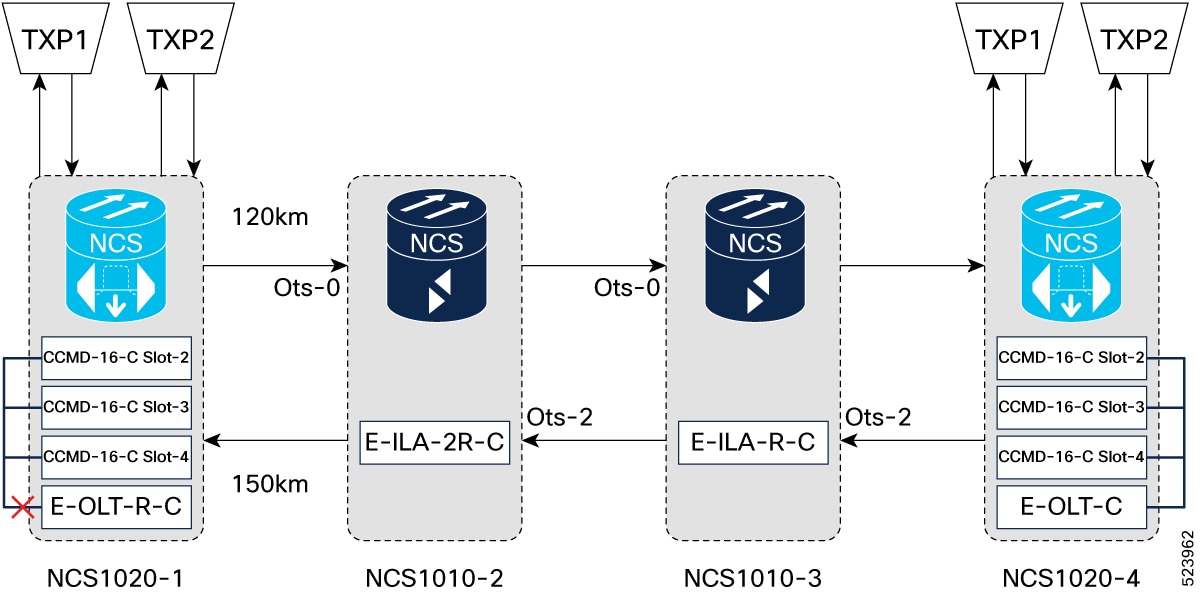
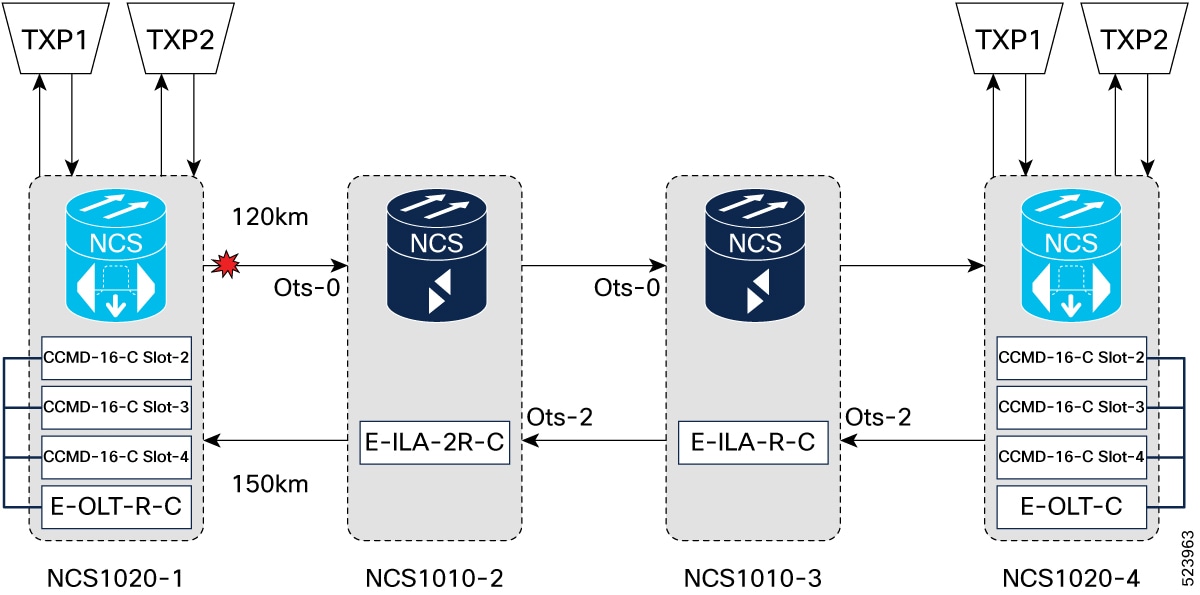
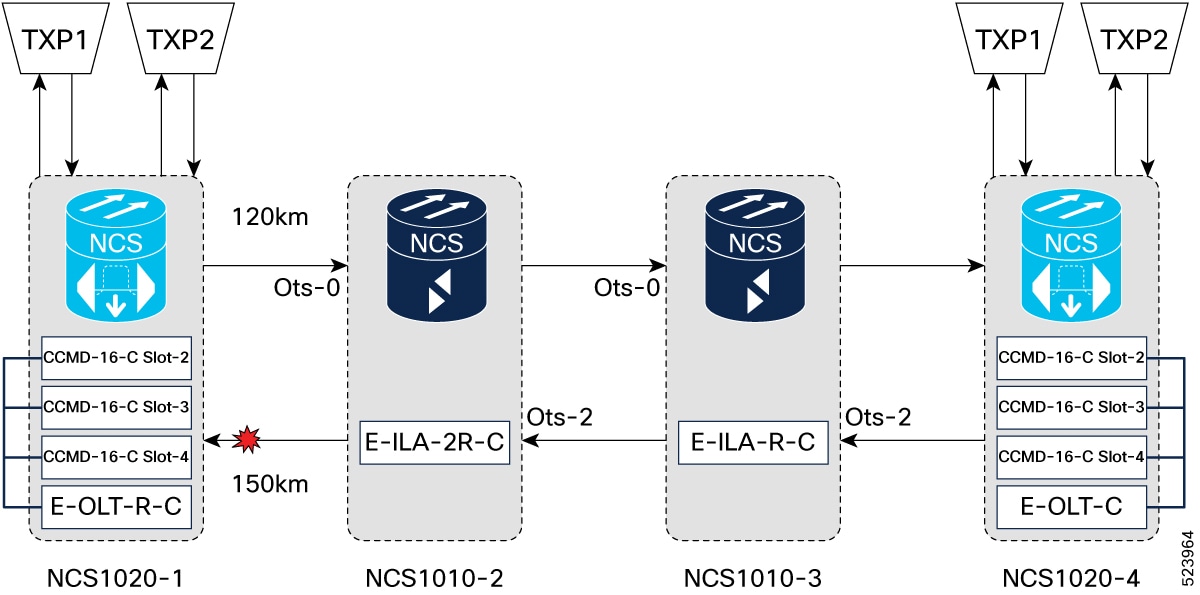
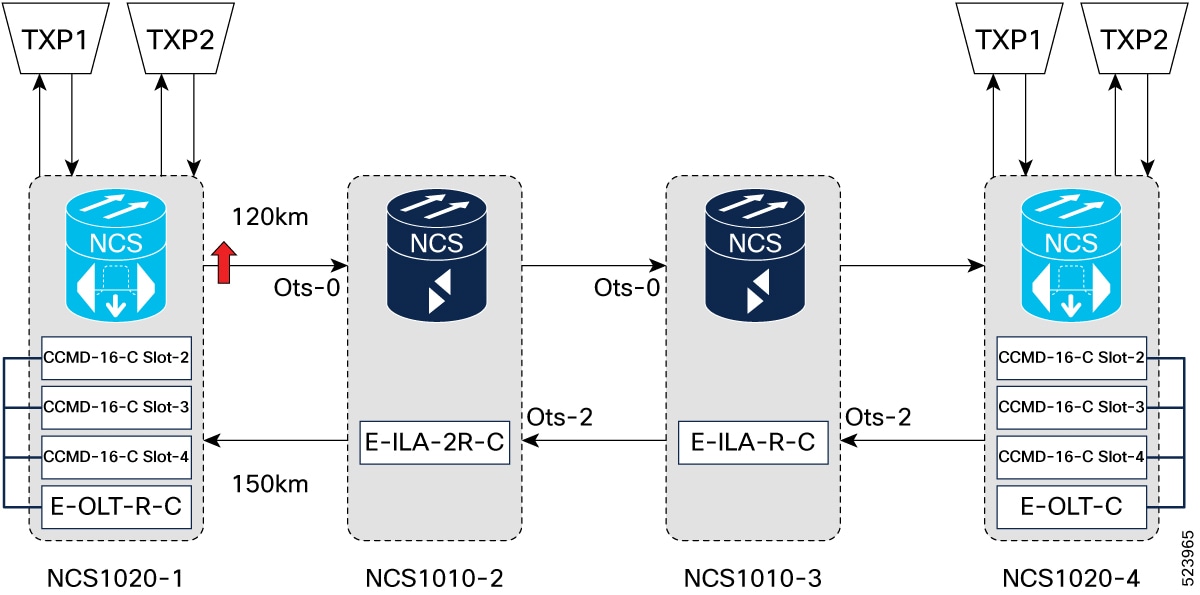

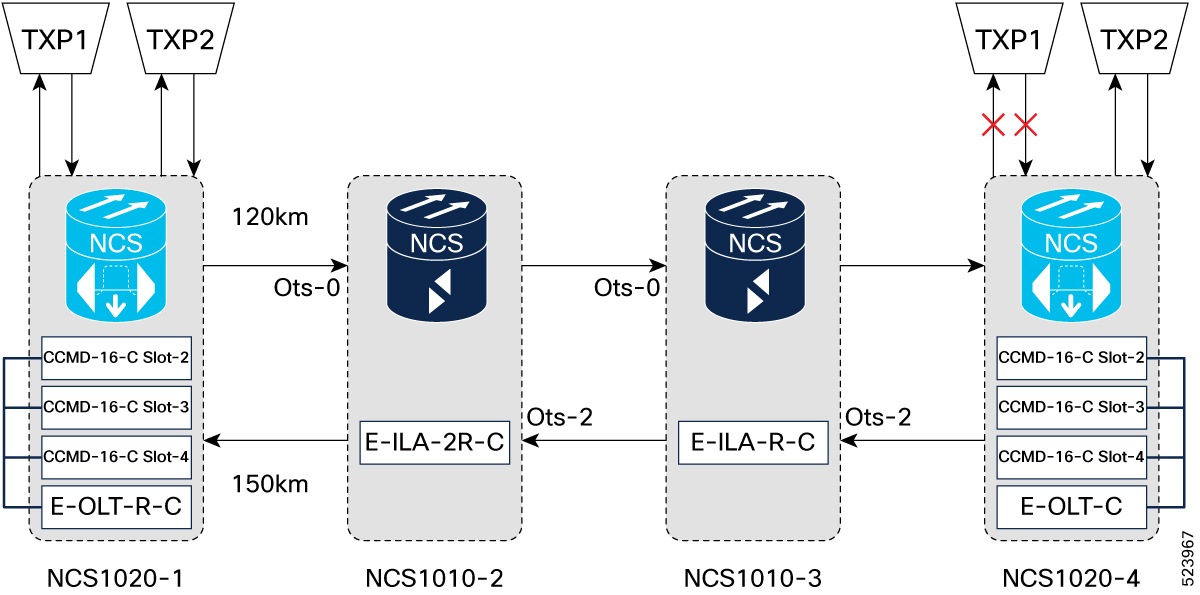


 Feedback
Feedback